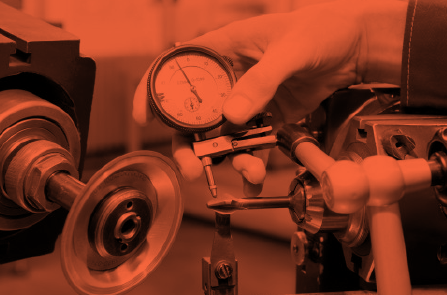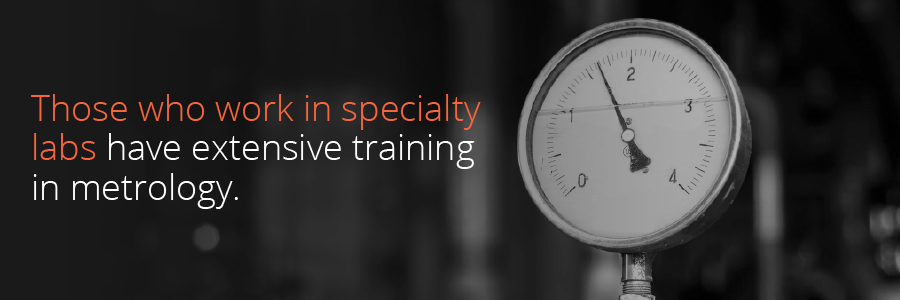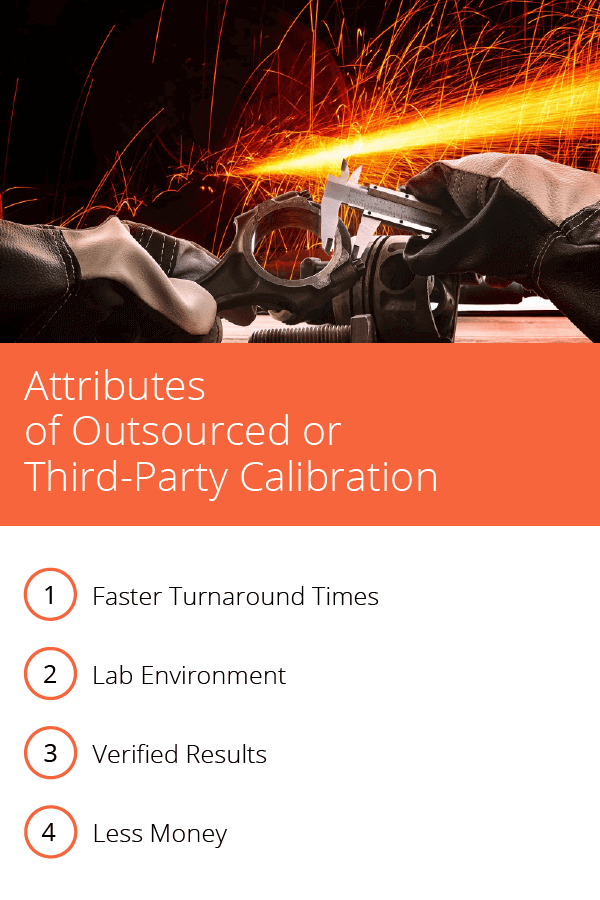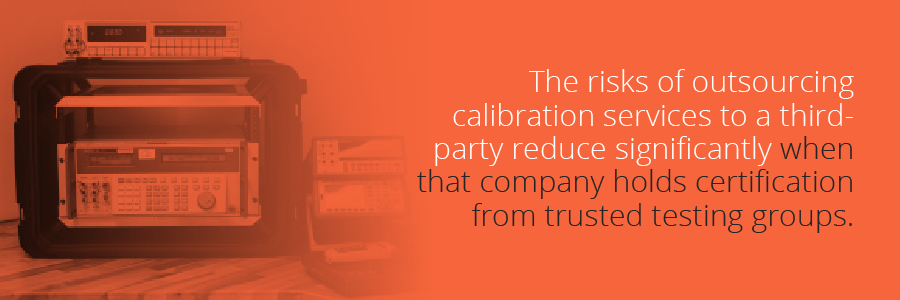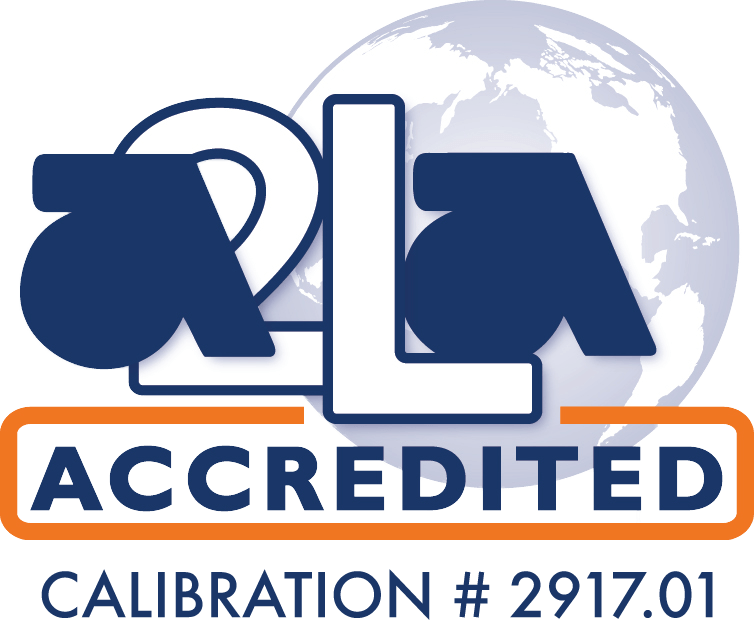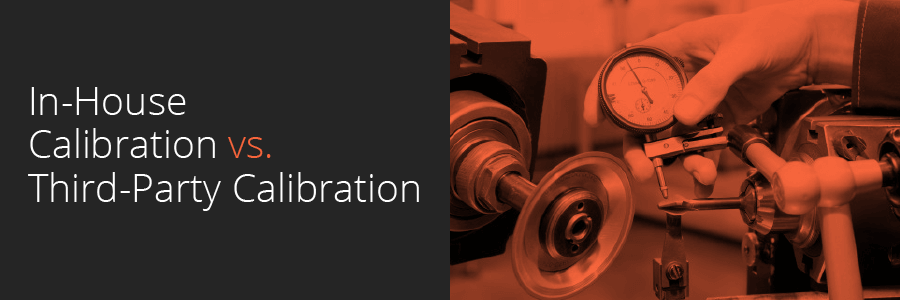
Your equipment will only be as reliable as its calibration. Whom you hire for this work is a critical part of the process. Choosing an in-house calibration procedure versus outsourced instrument adjustment could make or break the project. The best option depends on your company’s resources and how much you want to invest in the process. You may find a third-party service to offer more budget and time-friendly options compared to setting up tuning operations in-house.
Problems With an In-House Calibration Procedure
Too often, businesses want to do every step of the manufacturing process in-house. When it comes to measurements, this choice could be costly. While keeping other parts of production close, the accuracy of picking stock or packaging products do not have severe repercussions for failures. Gage calibration can because, in some instances, lives depend on the precision of the information from the instrument.
Due to the high risks involved, the accuracy of a gage’s calibration becomes an aspect of your company’s risk management program. Some methods of calibrating instruments at your facility can increase the risks of using the equipment. Calibrating and use errors only count for some of the reasons in-house calibration may not serve your business well.
1. More Money
The cost of calibrating in your facility will vary greatly. Depending on the instruments used and employees who work at the task, you could save money or far outspend your company’s budget. How much can your facility budget for a lab, employee training and equipment? Since your facility may not use the lab for calibrations all the time, the infrequent use may not justify the money put into creating and staffing it.
To make in-house operations such as this worth the investment, the money you put into it needs to offset the cost of outsourcing the service. If your business requires calibrating high volumes of instruments, you may break even by setting up an in-house tuning service for your equipment.
Even if you save money calibrating your company’s instruments, is the service worth the effort? If you cannot feel assured of the results, using members of your business and your business’s equipment will not save you money. Your investment dividends could come out negative because poor accuracy in instruments used by your company could severely hamper the production value of what your facility creates.
2. Machines
If you choose in-house operations, you may not get the same results as from an outside lab. Larger instrument science facilities have access to larger, more accurate machines — rotary tables, interferometers, auto-collimators and more. These machines can fine-tune instruments to an accuracy within millionths of a unit.
In addition to better, more expensive equipment, labs have strict climate-controlled areas for instrument adjustments. Humidity, temperature, elevation above sea level and barometric pressure can all influence the accuracy of the gage calibration. Regulating these conditions requires more than a corner of an existing lab. You need a new facility that has adequate environmental controls for the highest accuracy in calibration. Such a facility costs a large amount of money, and if your business does not already have a lab with these features, creating one may surpass your entire company’s budget, not just the project amount for instrument calibration.
3. Training
Those who work in specialty labs have extensive training in metrology. Their jobs during the day consist of accurately calibrating instruments from various businesses that choose to outsource the service. Because that is all they do, they excel at maintaining the correct parameters for accuracy based on the individual company’s needs and the manufacturers’ recommendations for the instruments.
To achieve a similar level of expertise in-house, you will need to train engineers to conduct calibrations. This training may take some of your current employees away from their work, reducing their overall productivity for the company. Another option will be to hire a team of engineers for your in-house lab. However, to hire such a group, you will likely need to pay a high enough salary to attract fully qualified and educated individuals, which brings up the problem of elevated compensation.
4. Employee Salaries and Health Insurance
If you take workers away from their typical jobs and ask them to do another, you may need to adjust their salaries accordingly. Hiring additional workers for a lab means paying out more money in wages and covering the health insurance for those employees.
When hiring specialists who’ve spent years in school to become experts in calibration, you may need to compensate them more. The higher salary for these workers reflects the further study and education they need to become specialists in calibration. If you train your current workers to calibrate instruments, you may still need to compensate them at a higher rate for their added responsibilities and training.
5. Longer Turnaround
Unlike third-party facilities that can operate all day, doing nothing but calibrations, your in-house lab may have a limited time for working. Because you may not have a dedicated set of workers and facility to do nothing but calibrate your equipment, the process can take longer than when you send it out. Depending on your project needs, a longer turnaround could become a severe detriment to operations.
6. Time Is the Most Important Factor
When you need calibration, time is of the essence. Without the ability to quickly get your instruments back into operation, you lose production time, cutting into profits and efficiency. While you can have an in-house calibration lab, you may prefer to hire a third-party on-site service for same-day calibration services. With such a service, you get the benefits of professional, high-level equipment without the costs incurred by keeping these in your facility all the time. For example, when you have MicronPA come to your facility, we will conduct calibrations at your location to the procedures set out ASTM, ANSI, ASME and NAVAIR.
7. Results Not Verified
Engineers in your company may have other jobs aside from adjusting instrument accuracy. They won’t know the specific requirements set by manufacturers for margins of error and calibration frequencies. Setting an instrument to too tight of a margin of error or calibrating more often than recommended by the manufacturer can both reduce the part’s accuracy. The problem this situation highlights is the lack of certification by in-house calibration teams.
Various organizations set standards for calibration labs. Meeting these requires having the equipment and staff to consistently meet national and international standards. Such strict criteria can be difficult for small labs to meet. If you must have a calibration that adheres to ANSI or ISO standards, you won’t get it from a small part-time lab in your facility. You can trust the precision of instruments calibrated in a lab meeting these standards.
Without proof of the accuracy of the calibration, you have no way of knowing how correct the instruments will be. In fields such as healthcare and aerospace, a poorly calibrated instrument could cost lives. A calibrator must prove certified accuracy to ensure verifiable results.
Attributes of Outsourced or Third-Party Calibration
When choosing a lab for instrument tuning, you may find outsourcing your best option, especially if you need extreme accuracy and certified results. Third-party calibration companies also give you the advantage of using more of your facility for production and less for a dedicated on-site calibration lab.
1. Faster Turnaround Times
Turnaround times for your equipment calibrations can happen in just five business days, or you could get more immediate results with on-site operations from a third-party provider. If sending the equipment to a lab, your turnaround time more closely matches these times. Shipping instruments for adjustment to the OEM often requires more time because calibration is not the manufacturer’s top priority, as the service is at labs.
Relying on in-house calibrating from your team could take even longer, depending on the other work your engineers need to do. Should you prioritize the calibration, what other tasks will your workers fall behind on? If you need to stay on a timetable, sending your equipment to a specialty lab will save you time, but you can reduce adjustment time even more with a third-party lab.
If you cannot send out equipment for calibration, on-site or mobile services may suffice. With these options, you have the least amount of disruptions to your production. You have the benefit of watching the calibration team as they work, increasing the security of your expensive and delicate instruments. Depending on what you need, our on-site calibration services may finish in just a day. This minimal processing time helps you maximize your production and get back to operations quickly.
2. Lab Environment
A calibration lab environment is difficult to replicate elsewhere. Strict controls over every aspect of the environment ensure the most accurate results possible. Often manufacturers don’t use calibration labs enough to justify the prohibitive costs of creating such a strictly controlled environment. Nor to individual companies have access to purchase the highly specialized, expensive equipment used in many professional calibration labs.
For precision results, the instruments must have the same environmental conditions set forth by the manufacturer during the tuning process. Changes in heat, humidity or pressure could affect the accuracy of the instrument. Maintaining consistent conditions to those set by the manufacturer becomes especially important when shipping instruments to a lab for adjustments. Differences in elevation affect barometric pressure the gage experiences. Controlling for this factor and other environmental conditions ensures the gage performs as the manufacturer intended.
3. Verified Results
Unless the lab in your facility adheres to strict standards and procedures, you may not have assured results from calibration. The risks of outsourcing calibration services to a third-party reduce significantly when that company holds certification from trusted testing groups.
To meet the exacting criteria of standardization organizations, a lab must prove it conducts calibration according to a strict set of guidelines both for procedures and technical ability. Because our facility meets these demands, the results we obtain are certifiable. Our labs at MicronPA hold accreditation from multiple standardization organizations. These include:
- The American National Standards Institute and the National Conference of Standards Laboratories (ANSI/NCSL Z540-1-1994)
- The American National Standards Institute and the National Conference of Standards Laboratories (ANSI/NCSL Z540.3-2006)
- The International Organization for Standardization and the International Electrotechnical Commission (ISO/IEC 17025:2005(E))
These three accreditations come from the American Association for Laboratory Accreditation (A2LA). Additionally, PRI has given us certification for ISO 9001:2015 standards. With accreditation from these groups, we can service instruments for use in national or international operations. Meeting the requirements for all these groups showcases our high standards and technical abilities. It also illustrates the accuracy of our calibration services.
While we want you to trust our results, we also understand the auditors of your company need proof. Because your company likely has audits occur regularly, we prepare you for them with audit-ready reports for each calibration service we offer. Each instrument calibrated comes with a report outlining the date, part details, technician, laboratory, test results, calibration status and contact information.
4. Less Money
Because your facility does not need to invest in an on-site lab for calibration, you will save money when outsourcing the service. Thanks to same-day service options, you can enjoy the benefits of reduced turnaround times and stringent standards. Our mobile service also comes with a cost-effective pricing model that provides competitive rates.
Money savings also come in ways you may not see. If you have a lab on site, you must pay for space, heating, cooling and machine maintenance, whether you use the equipment or not. These costs will add up over time. If you need occasional calibration, whether routine or otherwise, outsourcing may be your best option because you don’t have to pay for unused equipment or testing space.
Which Is Right for My Company?
Choosing the right calibration service depends significantly on your company’s time, budget and calibration requirements. If your facility does not already have calibration equipment, choosing in-house services could quickly put your project over budget. Additionally, having your employees do the work could cost you more in training and salaries. While cost will factor into your decision, it should not be the only consideration.
Above all else, accuracy must remain your primary goal when choosing calibration services, especially if you have a facility that uses the instruments for critical measurements that lives depend on. Doctors must trust the numbers coming from their medical equipment to make an accurate diagnosis. Pilots must believe that their altimeters give them the correct height, and manufacturing facilities must know their pressure gages provide valid values. Without proper tuning, any of these situations could turn disastrous.
Outsourcing the task to us at MicronPA gives you the knowledge of a certified facility using the strictest standards that produce verifiable, audit-ready results. We conduct calibration services for a variety of industries, including pharmaceutical, automotive, aerospace, defense and medical. Members of these sectors have trusted us for years to attend to their critical equipment needs. For more information about MicronPA’s calibration services, contact us online. Also, feel free to request a quote online to see how our services will fit into your company’s budget.


